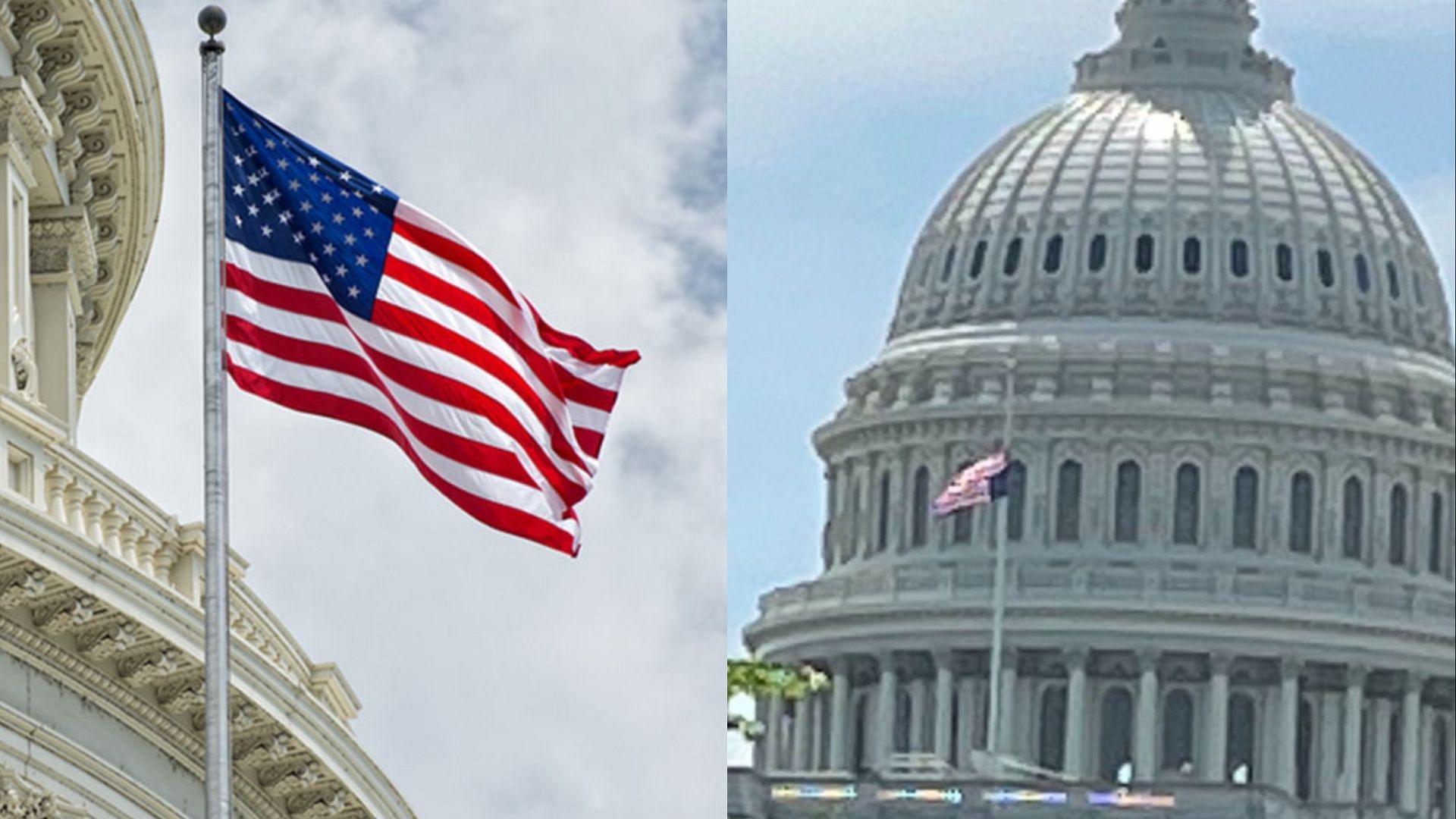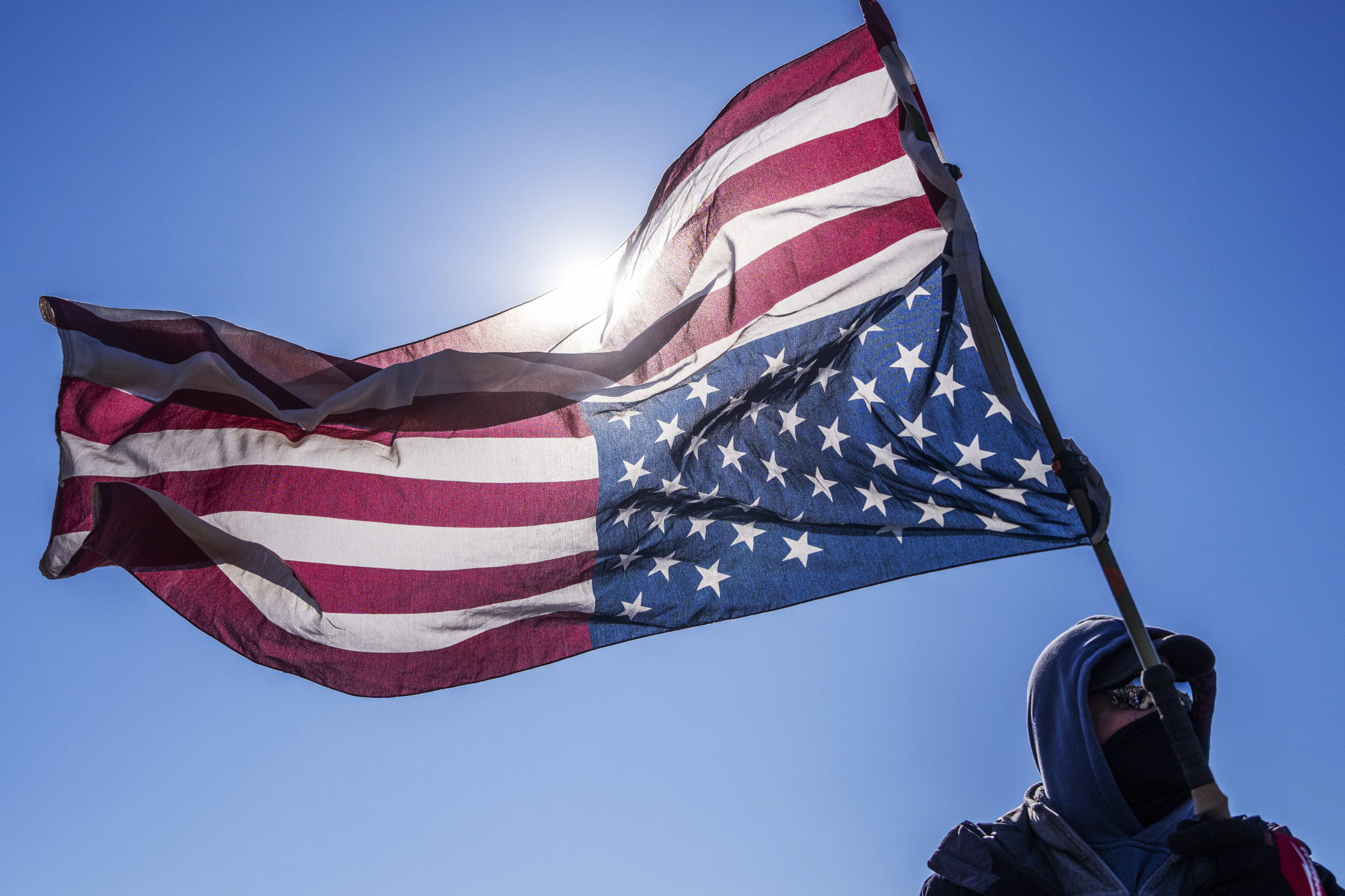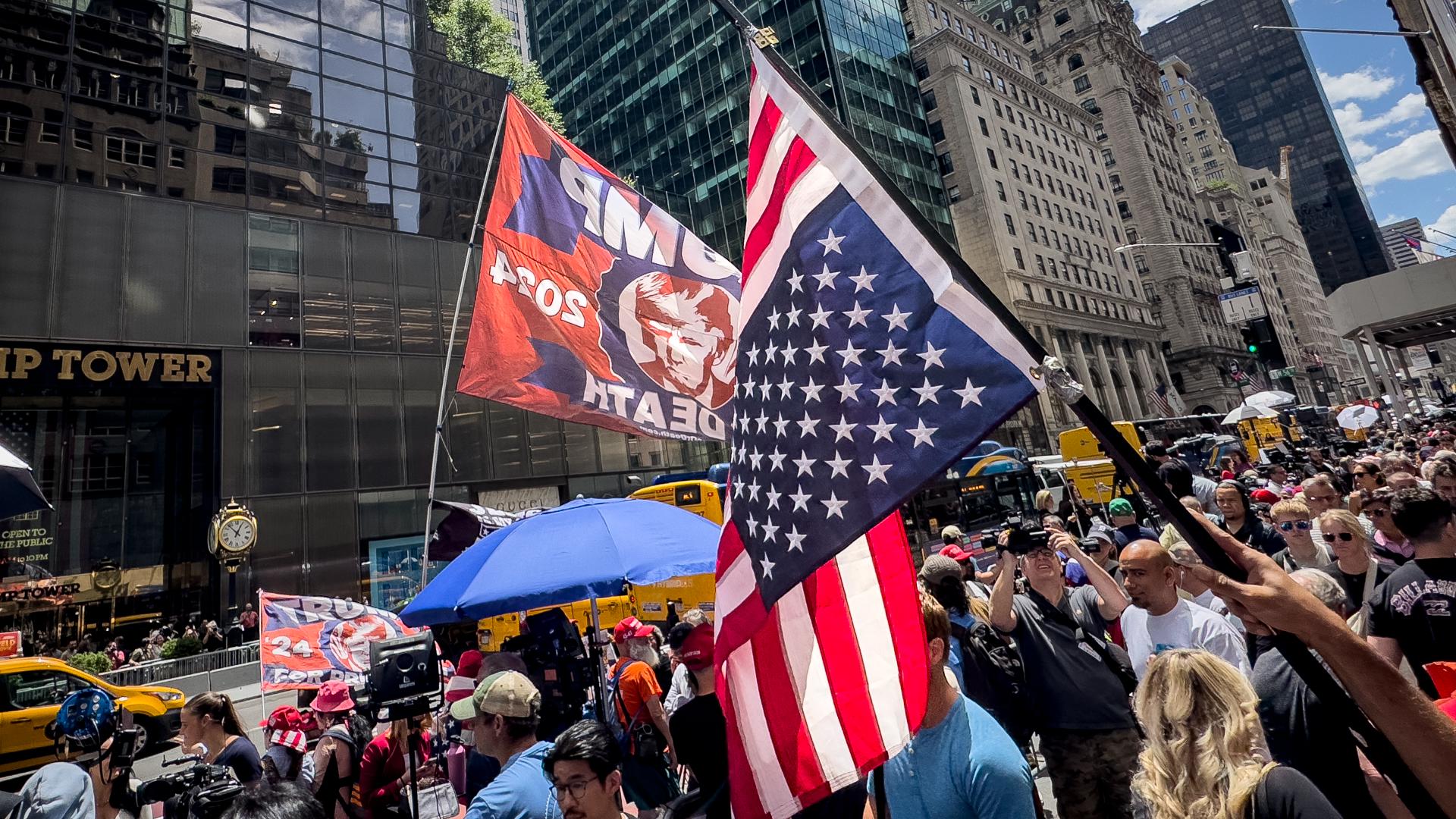The Inverted Flag: Unraveling Its True Meaning And Controversies
The sight of an American flag flying upside down can immediately evoke a strong reaction, often signaling a deep sense of alarm or protest. For many, the visual representation of the nation's most revered symbol in such a state carries a profound and urgent message. But what is the true meaning of upside down flag, and how has its symbolism evolved through history to the present day? This seemingly simple act of inversion is steeped in a rich, complex history, officially recognized as a signal of dire distress, yet increasingly adopted as a potent form of political dissent.
Understanding the nuances behind displaying a flag in this manner requires delving into both official protocols and the shifting tides of public sentiment. From its origins as a life-saving call for help to its contemporary use in expressing profound dissatisfaction with political leadership or national direction, the inverted flag continues to spark debate and ignite conversations across the United States. This article aims to explore these layers, providing clarity on its historical context, legal standing, and the powerful, often contradictory, messages it conveys.
Table of Contents
- The Historical Roots of the Upside Down Flag as a Distress Signal
- Is It Illegal? Decoding the Legalities of Displaying an Inverted Flag
- The Evolution of Symbolism: From Distress to Dissent
- The Jan 6th Insurrection and the Inverted Flag's Controversial Use
- Public Perception vs. Official Meaning: A Growing Divide
- The Broader Implications of Misinterpreting National Symbols
- How to Respectfully Display the American Flag
The Historical Roots of the Upside Down Flag as a Distress Signal
The primary and historically recognized meaning of upside down flag is that of a signal of dire distress. This interpretation is not a recent development but rather a deeply ingrained principle rooted in maritime tradition and military protocol. Imagine a ship in peril at sea, its mast broken, its crew in danger. In such extreme circumstances, reversing the national ensign would be a universal, immediate plea for help. This practice predates modern communication technologies and served as a critical visual cue for anyone nearby that lives or property were in extreme danger.
This tradition was formally adopted and codified into the United States Flag Code, establishing a clear, unambiguous context for when the flag should be displayed with its "union down" – meaning the blue field with stars is at the bottom, rather than the top. This official recognition underscores the gravity of the signal; it's not a casual gesture but a desperate cry for aid in situations where all other means of communication might have failed. The intent is to alert observers to an immediate, life-threatening emergency, making it a powerful symbol of vulnerability and urgent need.
Understanding the Official U.S. Flag Code
The United States Flag Code, formally known as Title 4 of the U.S. Code, outlines the advisory rules for the display and respect of the flag of the United States. While not strictly enforceable by law with criminal penalties for most violations, it serves as the authoritative guide for proper flag etiquette. When it comes to the inverted flag, the code is remarkably clear. It states, "The flag should never be displayed with the union down, except as a signal of dire distress in instances of extreme danger to life or property." This precise wording leaves little room for ambiguity regarding the flag's official interpretation when displayed in this manner.
This specific provision highlights the sanctity and seriousness with which the flag is viewed. It’s not merely a piece of cloth; it’s a symbol representing the nation, its values, and its people. Therefore, its intentional misuse, even if not legally punishable in all contexts, is seen as a profound disrespect to its established symbolism. The Flag Code's purpose is to ensure that the flag retains its dignity and that its signals, particularly one as critical as distress, are universally understood and respected.
When Dire Distress Calls for Inversion
What constitutes "dire distress" as per the Flag Code? This phrase refers to situations of extreme peril, where immediate assistance is required to prevent loss of life or catastrophic damage to property. Historically, this could include a ship sinking, a fort under siege, or a natural disaster leaving a community isolated and in urgent need of rescue. In such scenarios, the inverted flag acts as a universal SOS, cutting through language barriers and instantly conveying a desperate plea.
For instance, during times of severe flooding, earthquakes, or other natural calamities, individuals or groups trapped and unable to communicate through conventional means might resort to displaying an inverted flag. It's a visual shorthand for "we are in grave danger and need help now." This traditional meaning of upside down flag is rooted in a practical necessity, a final resort when all other options have been exhausted, emphasizing the critical importance of recognizing and responding to this urgent signal. The code's strict adherence to this definition aims to preserve the flag's integrity as a life-saving beacon, ensuring its message is never diluted by casual or frivolous use.
Is It Illegal? Decoding the Legalities of Displaying an Inverted Flag
One of the most frequently asked questions regarding the inverted flag is, "Is it illegal to hang the flag upside down?" The answer, surprisingly to some, is generally no, at least not in a way that would lead to criminal prosecution for most private citizens. While the Flag Code "specifically outlaws the upside down hanging of the flag aside from times of extreme duress," it's crucial to understand the nature of the Flag Code itself.
As Title 4 of the U.S. Code, the Flag Code is primarily advisory, not punitive. It provides guidelines for respectful display but does not carry criminal penalties for most violations by private citizens. This means that while displaying the flag upside down outside of a distress situation is considered a violation of flag etiquette and disrespects its intended meaning, it is not typically a crime for which one can be arrested or fined. The Supreme Court's rulings on flag desecration, particularly in cases like *Texas v. Johnson* (1989), have affirmed that actions involving the flag, even those deemed disrespectful, are often protected under the First Amendment as forms of free speech. Therefore, "First off, despite all of the U.S.' meticulous flag laws, it's not actually illegal to display a flag upside down" as a form of protest, though it certainly goes against the spirit and guidelines of the Flag Code. This distinction is vital for understanding the complex interplay between national symbolism, legal statutes, and constitutional rights.
The Evolution of Symbolism: From Distress to Dissent
While the official meaning of upside down flag remains a signal of dire distress, its symbolism isn't new and has undeniably broadened over time. Throughout American history, the inverted flag has represented various causes and sentiments, evolving from a literal call for help to a powerful, albeit controversial, symbol of political protest. This shift reflects a desire by some to use the flag's established urgency to convey a different kind of "distress" – one related to the state of the nation, its leadership, or its direction.
This evolution is a testament to the flag's enduring power as a national symbol. When citizens feel their country is in crisis, whether due to perceived threats to democracy, economic hardship, or political corruption, they sometimes turn to the most potent visual language available. By inverting the flag, protestors leverage its inherent message of emergency, twisting it to signify that the nation itself is in distress, under threat, or heading down a perilous path. This dual interpretation creates a significant tension between traditionalists who adhere strictly to the Flag Code and those who view the flag as a dynamic symbol capable of expressing a broader range of national sentiment, including profound discontent.
The Upside Down Flag as a Modern Form of Protest
In contemporary American society, "flying an American flag upside down is a recognized distress signal and a form of political protest." This dual identity has become increasingly prominent. Today, "most protestors associate the upside down flag with the nation heading in the wrong direction, or being under the control of the wrong political party." This interpretation transforms the flag from a plea for physical rescue into a metaphorical cry for political or societal intervention. It signifies a belief that the country is in a state of crisis, whether due to perceived threats to its foundational principles, its economy, or its global standing.
The act of inverting the flag in protest is a deliberate and provocative statement. It aims to shock, to draw attention, and to communicate a profound sense of urgency and dissatisfaction. Unlike other forms of protest, which might involve signs or slogans, the inverted flag uses the nation's most unifying symbol to express deep division and concern. It forces observers to confront the idea that something is fundamentally wrong, prompting questions about the state of the union and the direction of its leadership. This makes the inverted flag a powerful, albeit often divisive, tool in the arsenal of political expression.
Contemporary Political Statements and the Inverted Flag
The use of the inverted flag as a political statement has become increasingly visible in recent years, reflecting a polarized political landscape. For instance, the data indicates that "some Republicans have used the inverted flag to protest Trump's election loss and conviction, contradicting the flag's historical meaning." This illustrates how the symbol has been adopted by various political factions to express their grievances, regardless of their alignment with the flag's traditional purpose.
This phenomenon highlights a significant tension: the official Flag Code stipulates that "an inverted flag should only be used as a signal" of dire distress, yet its adoption by political movements broadens its perceived meaning of upside down flag. When used in protest, it communicates a message of severe discontent, often implying that the political system or current administration has led the nation into a state of crisis, a "distress" of a different kind. This appropriation of the symbol underscores the intensity of political divisions and the willingness of groups to employ potent national symbols to convey their alarm and dissent, even if it means challenging conventional interpretations.
The Jan 6th Insurrection and the Inverted Flag's Controversial Use
The events of January 6, 2021, at the U.S. Capitol marked a significant and controversial chapter in the modern use of the inverted flag. In the wake of the insurrection, images of the American flag displayed upside down became emblematic of the deep political divisions and the perceived crisis of democracy by many participants. For those involved, displaying the flag in this manner was a clear sign that they believed the nation was in "dire distress," specifically in response to the outcome of the 2020 presidential election and the subsequent legal challenges.
This particular instance brought the debate over the meaning of upside down flag into sharp public focus. While some saw it as a legitimate expression of profound concern for the nation's direction, others viewed it as a disrespectful and inappropriate use of a sacred national symbol, particularly given the violent context of the day. The display of inverted flags during and after the Capitol attack intensified the conversation about whether such a potent signal of distress should be reserved strictly for life-or-death emergencies, or if it can legitimately be repurposed to convey political despair. This event solidified the inverted flag's status as a symbol of deep political discontent, further blurring the lines between its official meaning and its evolving popular interpretation.
Public Perception vs. Official Meaning: A Growing Divide
There is a noticeable and growing divide between the official, codified meaning of upside down flag as a signal of dire distress and its public perception as a general symbol of protest or dissatisfaction. While the Flag Code unequivocally states that the "Flag Code prohibits flying the flag with the union down, except in dire distress," many Americans, particularly those engaged in political activism, have adopted it to convey a broader sense of national crisis or governmental failure.
This divergence creates a complex social dynamic. For those who strictly adhere to flag etiquette, seeing an inverted flag outside of a genuine emergency is deeply offensive and disrespectful. They view it as a desecration of a national symbol, undermining its intended purpose and the respect it commands. Conversely, those who use it for protest argue that their distress is indeed "dire" – a crisis of democracy, freedom, or national identity that warrants such a powerful signal. This clash of interpretations highlights how national symbols, while intended to unify, can also become battlegrounds for competing narratives and values, reflecting the deep ideological fissures within the country. The ongoing debate surrounding the inverted flag is a microcosm of these broader societal tensions.
The Broader Implications of Misinterpreting National Symbols
The evolving meaning of upside down flag carries broader implications beyond mere flag etiquette. When national symbols, especially those with specific, critical functions like a distress signal, are widely reinterpreted, it can lead to confusion and diminish their original power. If an inverted flag is seen by some as a political statement and by others as a genuine call for help, the effectiveness of the distress signal itself could be compromised in a true emergency. This ambiguity poses a real risk, potentially delaying or misdirecting aid in situations where every second counts.
Furthermore, the casual or widespread use of a distress signal for political purposes can desensitize the public to its gravity. What was once a universally understood plea for survival might become just another political prop, losing its unique ability to cut through the noise and demand immediate attention. This erosion of meaning can weaken the collective understanding and respect for national symbols, which are vital for national unity and identity. Maintaining a clear distinction between official protocol and expressive protest is crucial for preserving the integrity and functional purpose of such potent emblems.
How to Respectfully Display the American Flag
Understanding the traditional meaning of upside down flag and its official guidelines is paramount for anyone wishing to display the American flag respectfully. The U.S. Flag Code provides comprehensive guidance on proper flag etiquette, ensuring the flag is always treated with the dignity and reverence it deserves. Here are some key principles for respectful display:
- Right Side Up: Always display the flag with the union (the blue field with stars) at the top left when hung horizontally, or at the top right when hung vertically against a wall. The only exception, as discussed, is a signal of dire distress.
- Proper Lighting: If displayed at night, the flag should be properly illuminated. Otherwise, it should be raised at sunrise and lowered at sunset.
- No Touching the Ground: The flag should never touch anything beneath it, such as the ground, floor, water, or merchandise.
- No Commercial Use: The flag should not be used as clothing, bedding, drapery, or for commercial advertising purposes. It should not be embroidered, printed, or otherwise impressed on temporary items.
- Handling and Storage: When not in use, the flag should be folded properly. When it becomes worn or tattered, it should be retired in a dignified manner, preferably by burning.
- Position of Honor: When displayed with other flags, the American flag should always be at the highest point or to its own right (the observer's left).
Adhering to these guidelines not only shows respect for the flag itself but also for the nation it represents and the sacrifices made to uphold its values. While freedom of speech allows for various forms of expression, understanding and respecting the established protocols for national symbols fosters a shared sense of civic responsibility and national unity.
Conclusion
The meaning of upside down flag is a multifaceted concept, officially defined as a signal of dire distress but increasingly adopted as a powerful, albeit controversial, form of political protest. From its historical roots in maritime emergencies to its modern use in expressing profound national discontent, the inverted flag embodies a complex interplay of tradition, law, and evolving public sentiment. While the U.S. Flag Code reserves this display for life-or-death situations, its appropriation by various protest movements highlights a growing tension between official protocol and the exercise of free speech.
This ongoing debate underscores the potency of national symbols and the diverse ways in which citizens interpret and interact with them. Understanding both the historical context and contemporary applications of the inverted flag is crucial for navigating these discussions with informed perspective. We encourage you to reflect on the various meanings discussed and to engage respectfully in conversations about national symbols. What are your thoughts on the evolving symbolism of the inverted flag? Share your insights in the comments below, and consider exploring other articles on our site that delve into the rich history and interpretations of American symbols.

The Intriguing Meaning Of Flying A Flag Upside Down: Understanding

Upside-Down US Flag Meaning: 'Distress' Signal Seen Flying Across the

What does the upside-down American flag mean? | krem.com